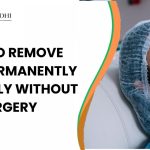|
Getting your Trinity Audio player ready...
|
Astigmatism is a common refractive error that affects millions of people worldwide. It occurs when the cornea or lens of the eye is unevenly shaped, causing blurry or distorted vision. Astigmatism can occur in conjunction with nearsightedness (myopia) or farsightedness (hyperopia) and can significantly impact daily activities such as reading, driving, and using digital devices. Fortunately, there are effective surgical options available for those who need more than just corrective lenses. In this blog, we will explore the best eye surgery for astigmatism, the benefits, and what you can expect from the procedure.
What is Astigmatism?
Astigmatism is a condition in which the curvature of the cornea or lens is irregular, rather than being spherical. When light enters the eye, it doesn’t focus evenly on the retina, leading to distorted or blurry vision. This condition can be present from birth or develop later in life due to various factors such as eye injury, disease, or surgery.
Astigmatism is often diagnosed during a routine eye exam. It is categorized based on its severity, and the symptoms can range from mild to more severe. Some common symptoms of astigmatism include:
- Blurry or distorted vision
- Eye strain or discomfort
- Difficulty seeing at night
- Headaches or dizziness
If left untreated, astigmatism can lead to eye fatigue and interfere with daily activities. While glasses and contact lenses are the most common treatments for astigmatism, eye surgery for astigmatism is often recommended for individuals who do not want to rely on corrective lenses or for those with moderate to severe astigmatism.
Why Choose Surgery for Astigmatism?
For many individuals, wearing glasses or contact lenses may not be the most convenient or effective solution for managing astigmatism. While these methods can provide temporary relief, they do not correct the underlying issue — the irregular shape of the cornea or lens. Surgery, on the other hand, can provide a long-term solution by reshaping the cornea or correcting the underlying issue.
The best eye surgery for astigmatism can not only improve vision but also reduce or eliminate the need for glasses or contacts. It offers a permanent solution that addresses the root cause of the problem.
What Are the Best Eye Surgery Options for Astigmatism?
There are several types of eye surgery for astigmatism, each with its own benefits and considerations. Let’s explore the most commonly recommended procedures:
1. LASIK (Laser-Assisted in Situ Keratomileusis)
LASIK is one of the most popular and widely performed eye surgeries for astigmatism. It uses a laser to reshape the cornea, improving the way light enters the eye. LASIK surgery is quick, relatively painless, and has a fast recovery time.
- How It Works: During LASIK, a thin flap is created in the cornea. The surgeon then uses a laser to remove small amounts of tissue from the cornea, reshaping it to correct the astigmatism. The flap is then replaced, and the eye heals quickly.
- Benefits: LASIK offers high success rates and minimal discomfort. Most patients experience improved vision within a few days, and the results are long-lasting. It can treat mild to moderate astigmatism.
- Recovery: The recovery time is short, and most patients can resume normal activities within a day or two. However, some temporary dryness or discomfort in the eyes may occur.
- Considerations: LASIK may not be suitable for individuals with very high degrees of astigmatism or those with certain eye conditions. A thorough eye exam is required to determine if LASIK is the right choice for you.
2. PRK (Photorefractive Keratectomy)
PRK is another laser-based surgery similar to LASIK but involves a slightly different technique. PRK is often recommended for patients with thinner corneas or those who may not be ideal candidates for LASIK.
- How It Works: In PRK, the surface layer of the cornea (the epithelium) is removed to allow the laser to reshape the cornea directly. The epithelium naturally regenerates over a few days after surgery.
- Benefits: PRK is effective for treating moderate astigmatism and is particularly useful for individuals with thinner corneas who may not be suitable for LASIK.
- Recovery: The recovery time for PRK is slightly longer than LASIK. It may take several days for the epithelium to heal, and some discomfort or blurry vision may persist for a few weeks.
- Considerations: Although PRK is effective, it requires more downtime than LASIK, and the vision may take longer to stabilize. However, PRK can be an excellent option for patients with specific eye characteristics that make LASIK unsuitable.
3. LASEK (Laser-Assisted Subepithelial Keratectomy)

LASEK is a variation of PRK and is sometimes used to treat astigmatism. It is suitable for individuals with thin corneas or those who are at risk of corneal complications from other procedures.
- How It Works: In LASEK, the outer layer of the cornea (epithelium) is loosened using an alcohol solution rather than being removed entirely. The laser is then used to reshape the cornea beneath the epithelium.
- Benefits: LASEK offers a safer alternative to LASIK for people with thin corneas and is effective for mild to moderate astigmatism.
- Recovery: The recovery process for LASEK is similar to PRK. It may take a few days for the surface layer of the cornea to regenerate, and vision may remain blurry for some time.
- Considerations: LASEK may involve a longer healing process compared to LASIK but offers similar long-term results. It is important to follow the aftercare instructions carefully to ensure proper healing.
4. Toric IOL (Intraocular Lens) Implantation
For individuals with more severe astigmatism or those who have developed cataracts along with astigmatism, toric IOL implantation may be recommended. This procedure involves the insertion of a special type of intraocular lens (IOL) that corrects both cataracts and astigmatism.
- How It Works: The surgeon removes the cloudy lens (in cataract cases) and replaces it with a toric IOL, which has the ability to correct the refractive error caused by astigmatism.
- Benefits: This option is ideal for individuals who need cataract surgery and also have significant astigmatism. The toric IOL corrects both conditions in one procedure.
- Recovery: Recovery time is similar to cataract surgery. Vision typically improves within a few days to weeks.
- Considerations: Toric IOLs are highly effective for correcting astigmatism, but they may not be suitable for patients with very high levels of astigmatism.
Which Eye Surgery is Best for You?

The best eye surgery for astigmatism depends on several factors, including the severity of your condition, the thickness of your cornea, your overall eye health, and your preferences for recovery time and cost. It’s important to have a detailed consultation with an eye specialist to discuss your specific needs and choose the most appropriate treatment.
- For mild to moderate astigmatism, LASIK is usually the preferred option due to its quick recovery time and high success rate.
- For patients with thinner corneas or more advanced astigmatism, PRK or LASEK may be more suitable.
- For those with both astigmatism and cataracts, toric IOL implantation may be the best solution.
Which Surgery Works Best for Astigmatism? Find Out from Top Eye Doctors!
Make An AppointmentConclusion
In conclusion, there are several effective surgical options for treating astigmatism, each tailored to the individual’s needs and eye characteristics. Whether it’s LASIK, PRK, LASEK, or toric IOL implantation, there are treatments available that can help restore clear vision and reduce the dependency on glasses or contact lenses.
If you’re experiencing astigmatism and are considering the best eye surgery for astigmatism, it’s crucial to consult with an eye care professional at IGEHRC. Our team of experienced ophthalmologists can evaluate your condition and help you choose the best treatment option to achieve the best results. Schedule a consultation today and take the first step towards clearer vision.












